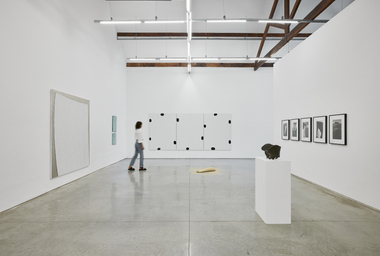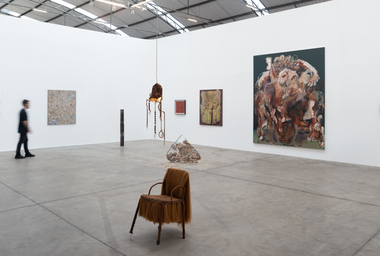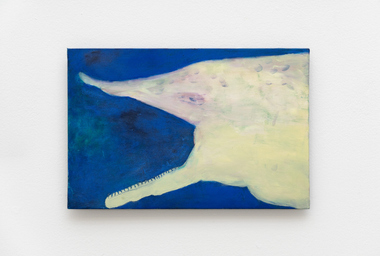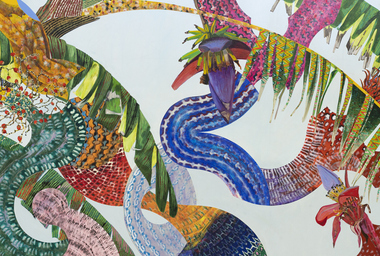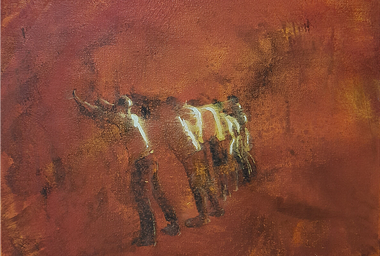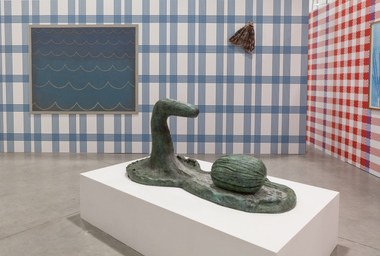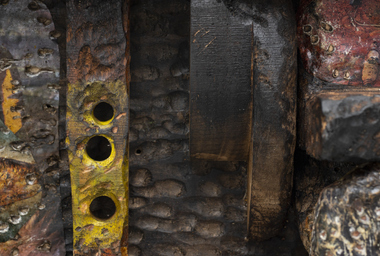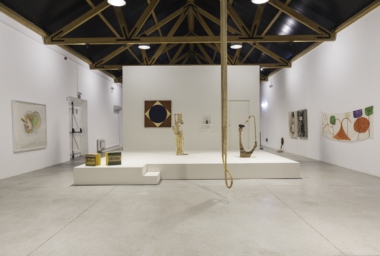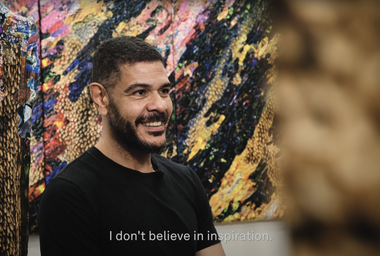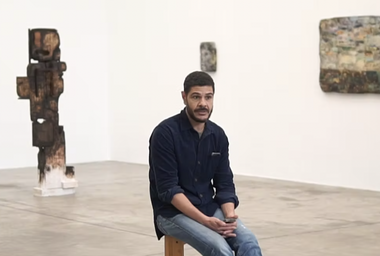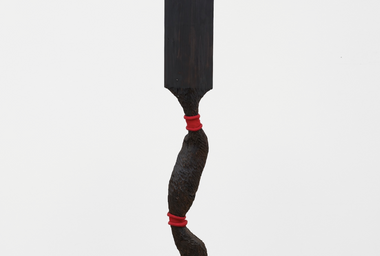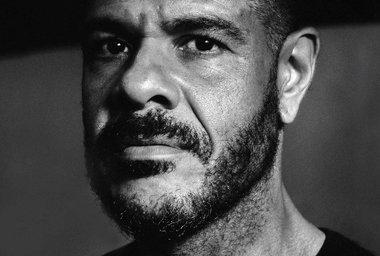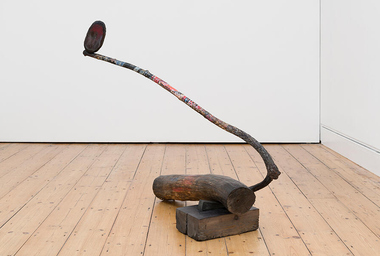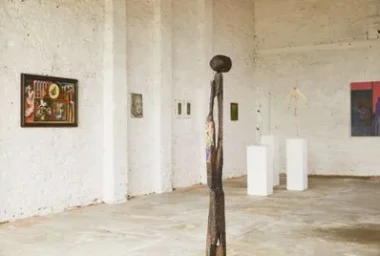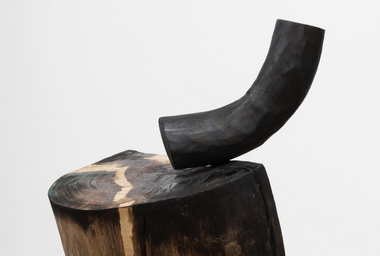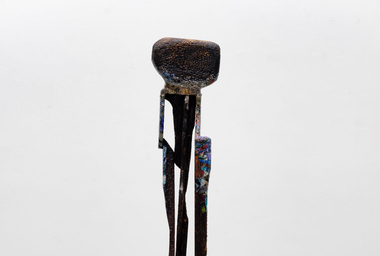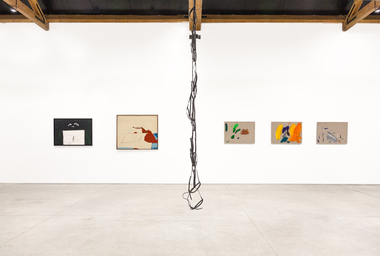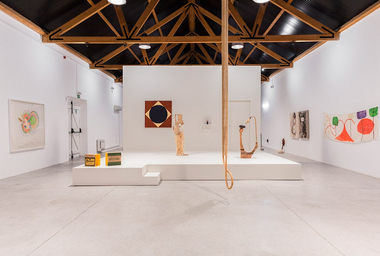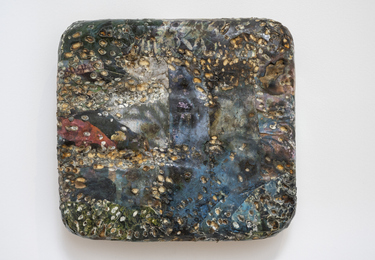
Anderson Borba’s practice bends and broadens the material and conceptual possibilities of wood in freestanding totems, or hanging wall reliefs. Aiming for textural ambiguity, the artist colors his pieces with oils and varnishes, coats them in collages of distorted pictures, covers them in grooves and notches, and burns the volumes’ surfaces. A distinctive trait in Borba’s approach is the synthesis of traditional craft and contemporary modes of expression, such as digitally manipulated imagery. Taking cues from both art-historical canons of sculpture and the self-taught craftsmen of inner Brazil, the artist’s process-oriented approach results in tactile abstractions that set off bodily allusions as one circles the space around them, shifting our perception of proportion, mass and shape. In unbalancing the distinctions between matter and image, Borba’s objects acquire an animistic aura and mischievous ritual connotations.
Among his recent solo exhibitions are Secret Cerimony, The Approach, London, UK (2025); Anderson Borba & Dudi Maia Rosa, Auroras, São Paulo, Brazil (2024); Anderson Borba & Gokula Stoffel, François Ghebaly, New York, USA (2024); I’ve seen one of these, Fortes D’Aloia & Gabriel, São Paulo, Brazil (2022); The End Begins at the Leaf — Anderson Borba & Antonio Tarsis, BeAdvisors Art, Londres, UK (2021); Anderson Borba & Alex Canonico, Kupfer Gallery, London, UK (2021) and Ride the Worm, Set Gallery, London, UK (2018). He has also taken part in the group shows Nunca só essa mente, nunca só esse mundo, Fortes D’Aloia & Gabriel | Carpintaria, Rio de Janeiro, Brazil (2023); Comporta 2023, Fortes D’Aloia & Gabriel + kurimanzutto, Comporta, Portugal (2023); Para-raios para energias confusas, Fortes D’Aloia & Gabriel, São Paulo, Brazil (2023); Eccentric spaces, The Artist Room, London, UK (2023); I Could Eat You, Clearing + Fortes D’Aloia & Gabriel + Madragoa, Casa de Cultura da Comporta, Comporta, Portugal (2022) and Tragédia!, Fortes D’Aloia & Gabriel, São Paulo, Brazil (2022).
